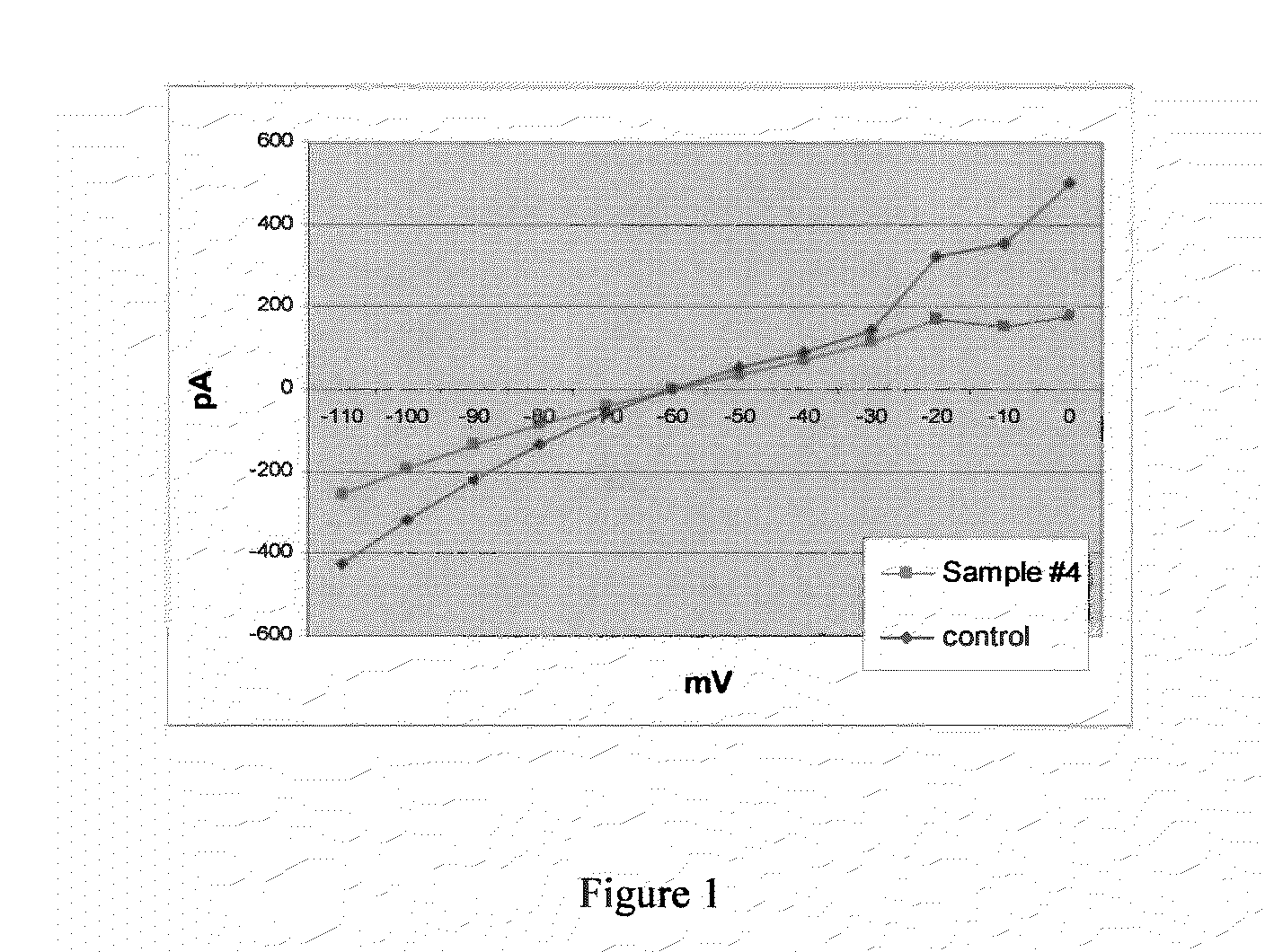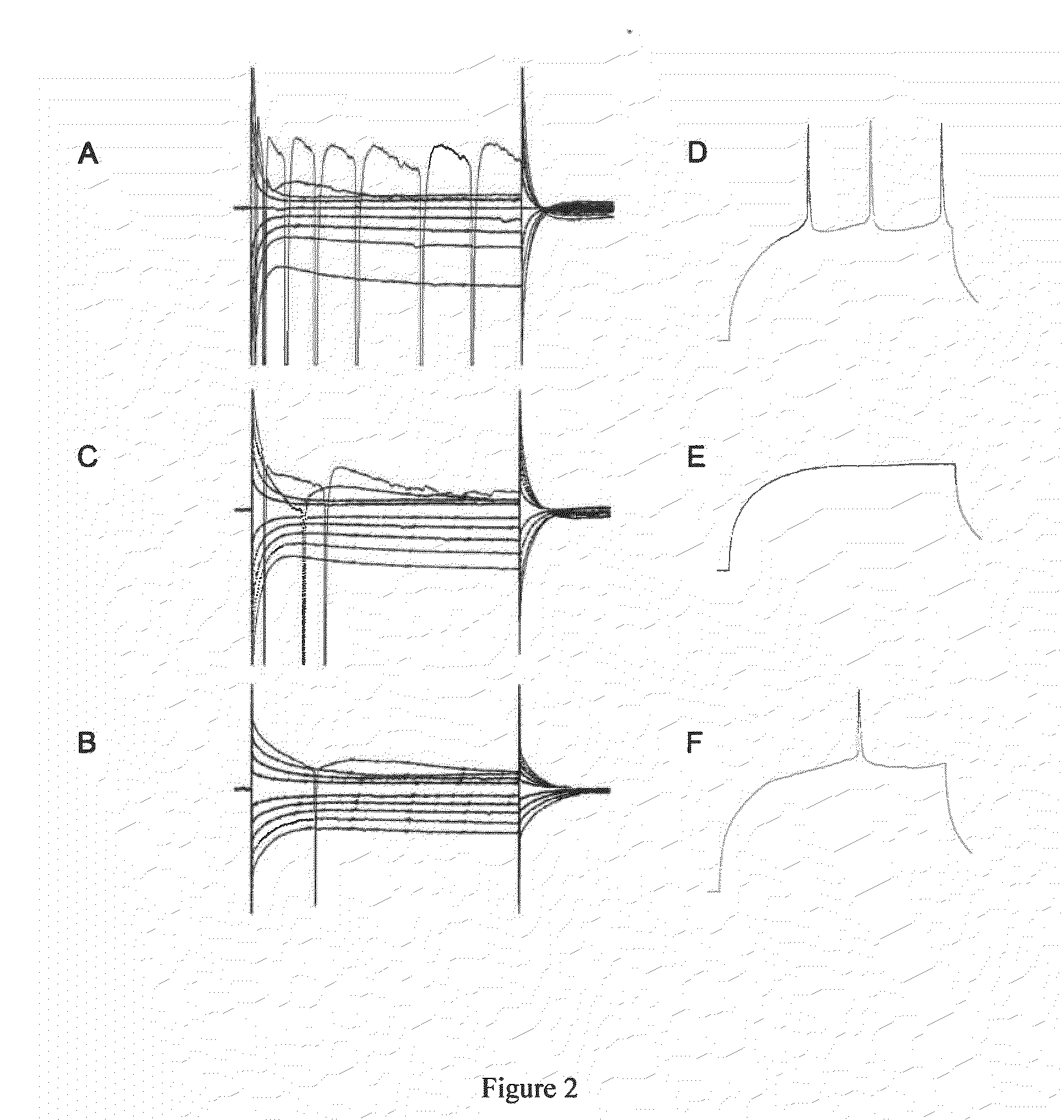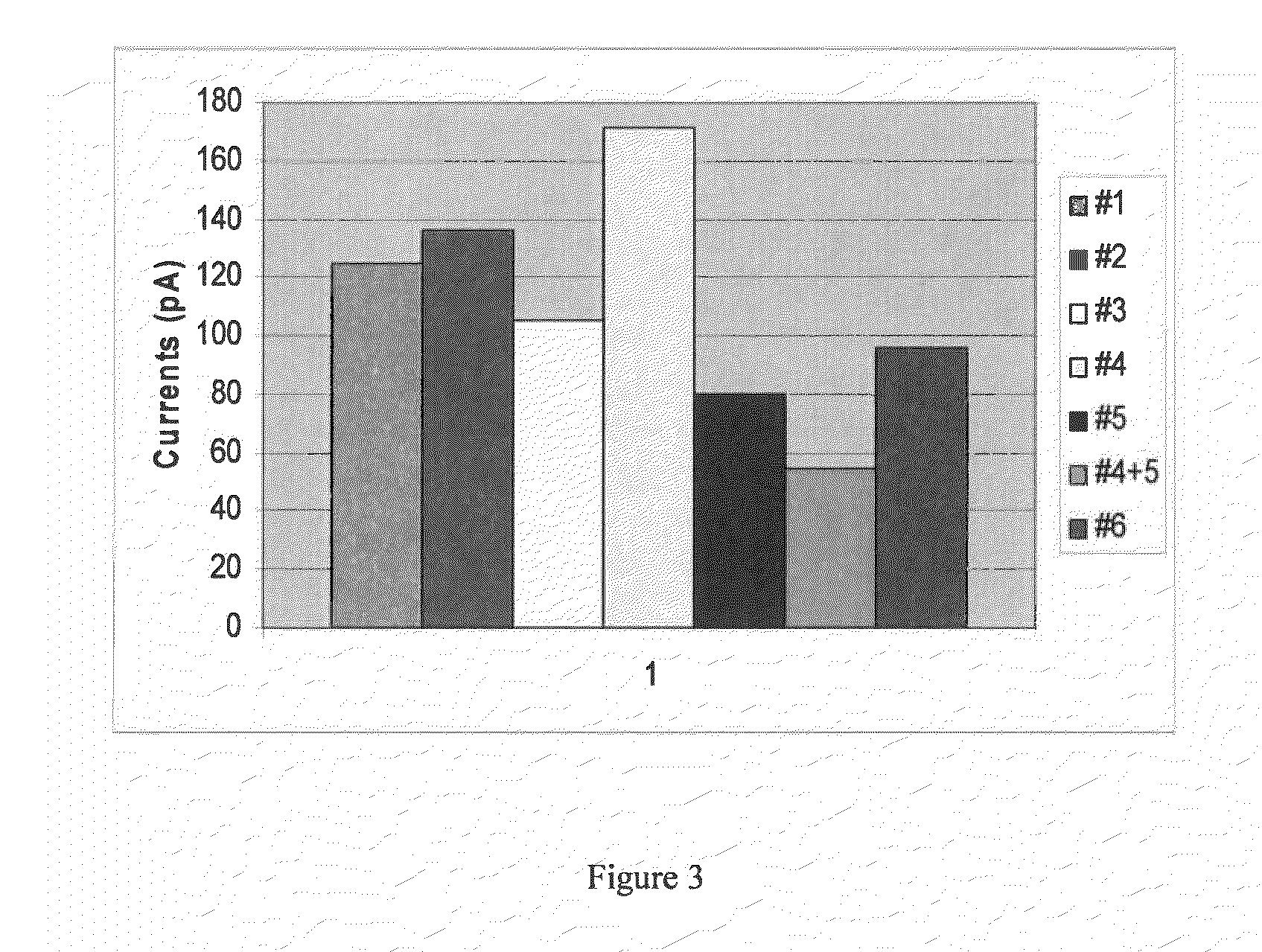Composition and method for inhibition of nerve transmission
a technology of nerve transmission and composition, which is applied in the direction of biocide, plant/algae/fungi/lichens ingredients, drug compositions, etc., can solve the problems of limiting the use of populations, amitriptyline has a high incidence of anticholinergic side effects, and the success of neuropathic pain treatment with these approaches is limited. , to achieve the effect of inhibiting nerve cell transmission
- Summary
- Abstract
- Description
- Claims
- Application Information
AI Technical Summary
Benefits of technology
Problems solved by technology
Method used
Image
Examples
example 1
Patch Clamp Electrophysiological recordings (K+ Channels
[0098]Potassium channels have been associated with a number of important cellular functions including the regulation of heart rate, muscle contraction, neurotransmitter release, and neuronal excitability (14). As such, K+ channels have been recognized as potential drug targets and have been utilized as screening agents for potential therapeutic molecules, including potential therapeutic drugs for pain. The role of K+ channels in controlling cell membrane potential and neuronal cellular excitability makes them of interest in modulating neruronal hyperexcitability states, including neuropathic pain.
[0099]Whole cell patch clamp recordings (Axopatch 200B) were made using borosilicate patch pipettes of resistance 3-8 MΩ with an intracellular solution utilizing potassium chloride as the current carrier. Current clamp recording were conducted holding the membrane potential at −60 mV to characterize the firing property of the cells. Vo...
example 2
Human Screening Using Synthetic Geranium in Neuropathic Pain (Post-Herpetic Neuralgia)
[0101]Since natural geranium oil relieves neuropathic pain and inhibits the delayed rectifying potassium channel, and since synthetic geranium oil, geraniol, and citronellol all inhibit the delayed rectifying potassium channel, synthetic geranium oil and geraniol were tested on patients with post-herpetic neuralgia. A synthetic blend of geranium oil was tested in patients with post-herpetic neuralgia that were positive responders to natural geranium oil. Pain relief with a synthetic blend of geranium oil (see Table 1 for constituents their relative amounts in the synthetic blend) was self reported to be as good or better than pain relief with natural geranium oil. Pure geraniol was then tested in these subjects. Results indicated that geraniol had the greatest effect on neuropathic pain relief.
example 3
Human Clinical Trial of 64 Patients with all Cause Neuropathy
[0102]A total of 64 individuals with diagnosed peripheral neuropathy of at least 3 months duration and experiencing daily plantar cutaneous foot pain were recruited and screened for eligibility. Of these individuals, 18 were excluded because they did not meet the predetermined inclusion criteria for foot pain (VAS=3-8). The remaining participants completed three weeks of pain-relieving intervention as described below. One participant did not complete the intervention due to unknown reasons. Of those participants that competed all testing procedures (n=45), five participants reported pre-test foot pain levels outside of the predetermined criteria (VAS 8) at least once throughout the study period. All data acquired from these participants was excluded from subsequent analyses. There was no adverse event during the study period to report.
[0103]Pain was recorded before treatment and for 8 hrs after treatment on an 11 point (0-...
PUM
| Property | Measurement | Unit |
|---|---|---|
| Fraction | aaaaa | aaaaa |
| Fraction | aaaaa | aaaaa |
| Fraction | aaaaa | aaaaa |
Abstract
Description
Claims
Application Information
 Login to View More
Login to View More - R&D
- Intellectual Property
- Life Sciences
- Materials
- Tech Scout
- Unparalleled Data Quality
- Higher Quality Content
- 60% Fewer Hallucinations
Browse by: Latest US Patents, China's latest patents, Technical Efficacy Thesaurus, Application Domain, Technology Topic, Popular Technical Reports.
© 2025 PatSnap. All rights reserved.Legal|Privacy policy|Modern Slavery Act Transparency Statement|Sitemap|About US| Contact US: help@patsnap.com



